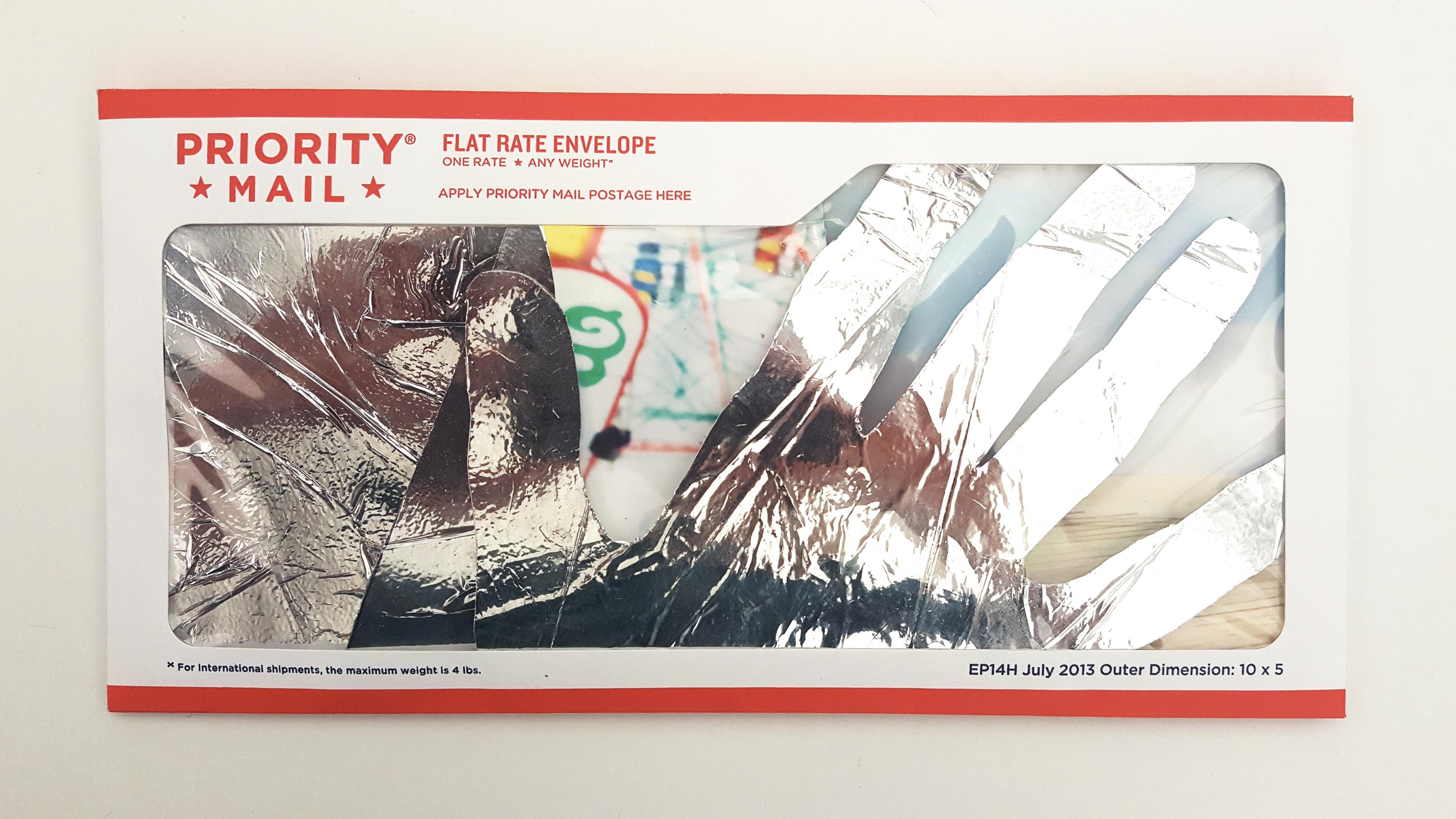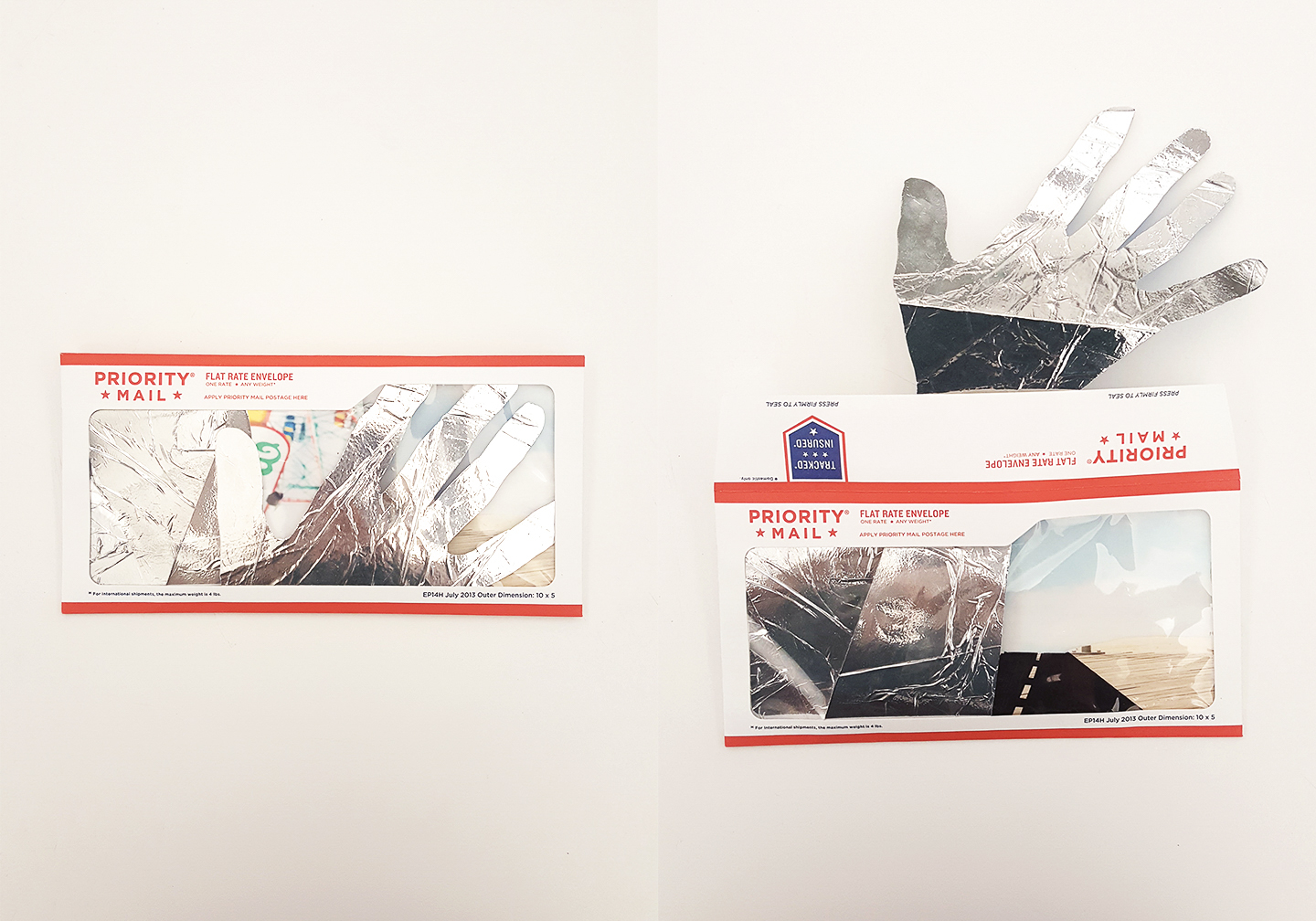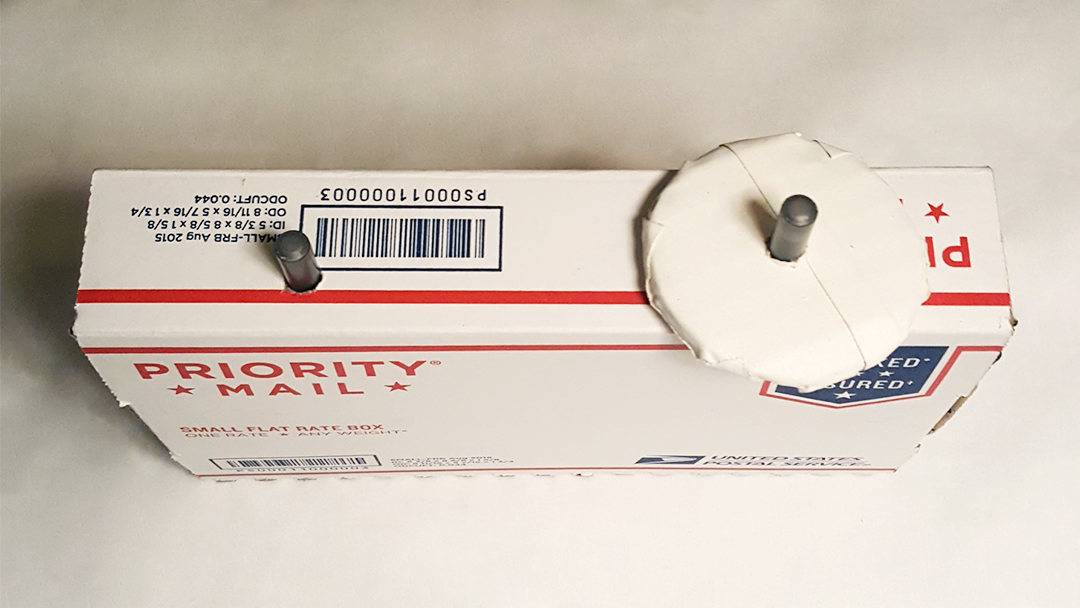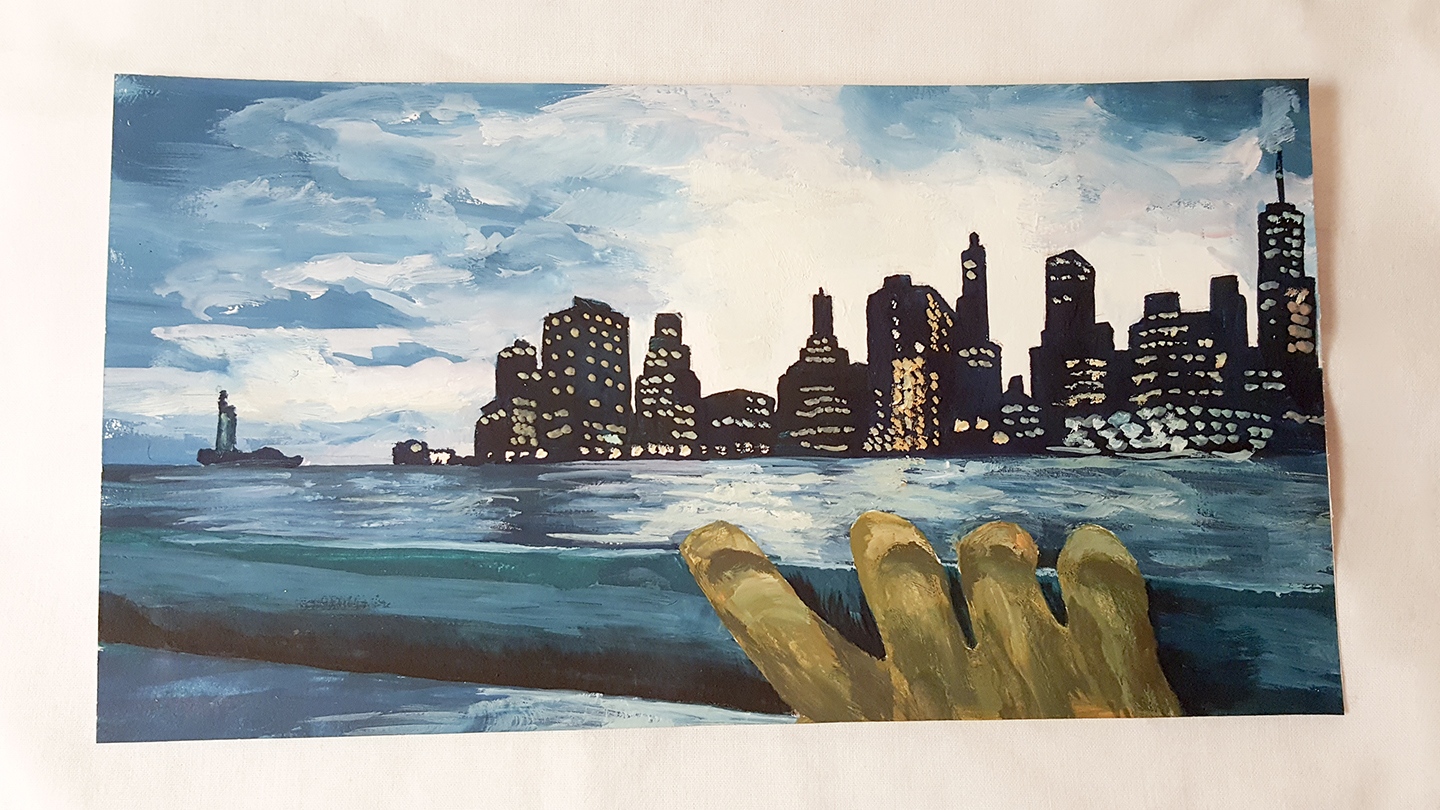Constraints:
1) Make something that can be mailed for less than $10.
2) Each thing should be relevant to or inspired by its intended recipient.
3) Each thing should be able to compound with the previous thing to create a larger whole.
1/7 Hello/Goodbye Rearview Mirror Postcard
2/7 Expansion Box
3/7 SloPro
4/7 Dusk Postcard
5/7 Ingrown Envelope
6/7 Thwart Box
7/7 Here/There Möbius Postcard
1/7 Hello/Goodbye Rearview Mirror Postcard
This is made to be sent, fondly, to the job I used to drive an hour each way across the prarie to reach. It was a job where I worked with my hands--the recipients would appreciate this note as a greeting, a reflection of the location, and a representation of my time there and my departure.Both praries and car rides across praries are simultaneously claustrophobic and liberating, and I wanted this project to reflect that.
As one of my constraints requires that the creation be mail-able for under $10, I chose to use a flat rate envelope, which may be shipped domestically for $6.65.
I'll continue to use these flat rate packages for ease of mailing as well as project consistency, since one of my constraints requires that the project compound to create a larger whole.

This is a 10x5" envelope with a large clear window across the front. Attached to the interior is a fold-out hand silhouette, covered in mirrored foil (part of a space blanket).
As the hand folds out, it reveals a highway scene.


2/7 Expansion Box
This package is to be sent to the Boundary Waters (c/o a lake cabin). Created in a small flat-rate box, it will cost $7.15 to ship. The box is 8 5/8x5 3/8x 1 5/8".
A used bookstore yielded a book that fit exactly in the box: The Road of the Century by Alvin Harlow (1947). Part of a series on technological innovations, it details the history and westward expansion of railroads in the United States.
The book content was arbitrary: I chose it according to dimensions. After considering the content, I decided to address my project to northern Minnesota. The topics of rail, technological expansion, and westward settlement are relevant to the Iron Range location.
I screwed portions of the book together so that the only pages revealed are the image plates, showing various train documentation.
The next element of this project is the shape of a lung I cut into the layers of the book. I considered the sound and rhythm of trains: integral to American musical history and evocative of breathing. I also considered the expanding and contracting structure of a book: This project will open and close as a breathing lung. Lungs are also relevant to northern Minnesota, as one of my primary memories of the location is its air. And the vast forested region is an important carbon sink, threatened by global warming.


As another part of the body to be mailed to a place that is significant to me physically and ecologically, this is in keeping with the constraint requiring compounding creations.

3/7 SloPro
This is a pinhole camera made to go through the mail. It's intended to be sent to a friend across the country. Although we experience the distance through absence, it's hard to grasp the physical distance of a continent between two people.
I'm not optimistic about it working, but I'd like to send this loaded with film. The loose flap on the front and the protruding, easily turned film dial might move throughout the trip in the mail. It wouldn't capture images, but I'd be happy with some blurs of light that manifest the light seen by the box on its journey--a physical record of the distance covered.
I'm also thinking about GoPros, google maps, and other high-tech documentations of location and travel. This is the opposite, and will yield a decidedly useless travel record.




4/7 Dusk Postcard
This is a simple one—a letter to my grandma. 10x5", gouache on paper, enclosed in a windowed priority mail envelope.The painting is an image of Manhattan viewed from under the Brooklyn Bridge. It's a clichéd image, but my grandma is deep into dementia: For her to understand the letter and where I am, it was important that this be a recognizable image of New York City. For her and others I've known with dementia, interactions are increasingly limited to cliché phrases and small talk, as these units of communication elide any complex thinking.
This painting turned out darker than I had intended. I'll go back and lighten it before I send it, so that it's not so ominous.


5/7 Ingrown Envelope
12.5x9.5" flat-rate envelope, red paint, and embroidery thread.This piece is made with a friend in mind. It's not a mail piece that I would send. I'm thinking about the circulatory system, as well, and that fits with the mail system theme.
I really liked the idea of packaging that has grown together and resists function. I ran out of envelopes, but in the future, would build this so that the interior piece was double-sided. This is a project I'd continue building upon, exploring growth mechanisms within a mail piece.



6/7 Thwart Box
Small flat rate box, paper, embroidery thread.When the viewer opens the box lid, the sides are pulled down by the string, and when the sides are lifted up, the lid is pulled back down. The letter is therefore always partially obscured.
I hadn't intended the central cutout section to look like a heart, and didn't realize that it did until later in the project. If I were to do this again, I'd be more thoughtful about using that image or eliminating it.
This project was much more of a mechanical exploration than an aesthetic success. I wanted to further explore yesterday's idea of a letter that resists opening, and begins to grow into its packaging. This too would be sent to a friend.




7/7 Here/There Möbius Postcard
Cloth, marker.This postcard is made to be re-configured so that it can be re-sent indefinitely. It has two addresses—my current address and my parent's address—and can be rotated to show one or the other. The addresses are written in permanent marker, and the letter in pencil, so that the can be washed and sent back.
Although I'm happy with the concept, if I were to do this again I'd use a heavier starched fabric so that it holds a structure. I like the idea of having to wash, starch, and iron a letter before returning it. Especially for correspondence with my family, there's an intimate domesticity to those actions that fits with the closeness and ritual of physical correspondence.

